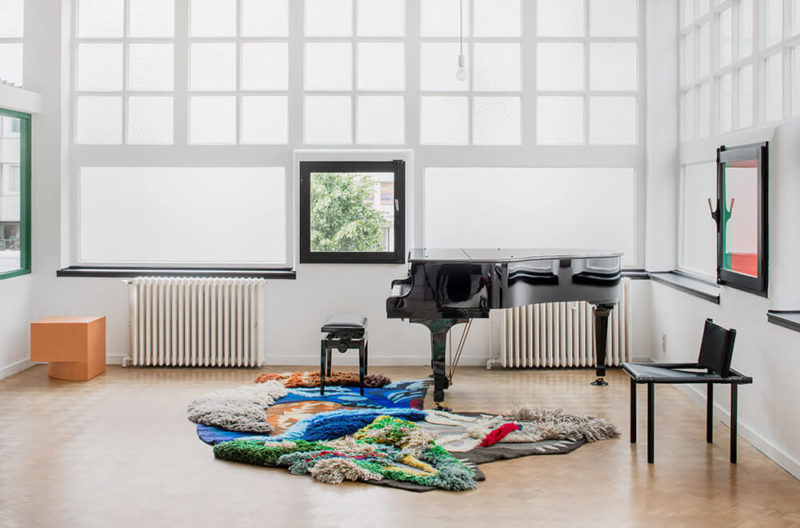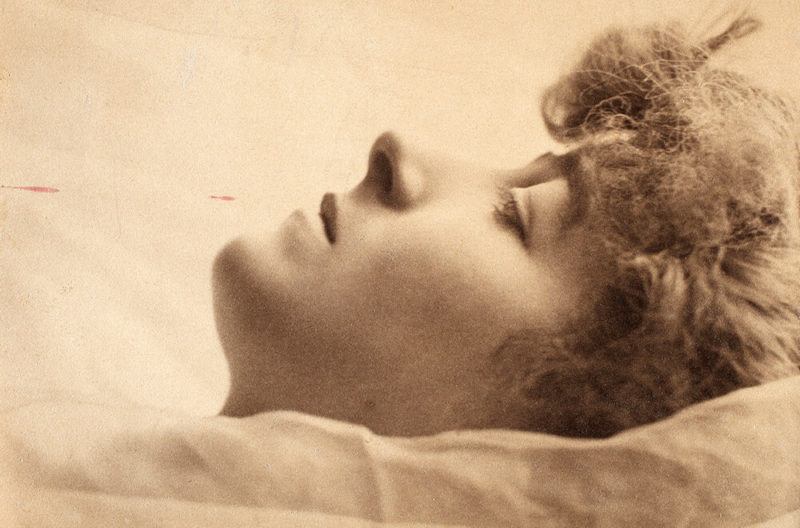The Essential Goods Show
In response to COVID, a group show explores the idiosyncratic meaning of necessity.
Fisher Parrish Gallery, 238 Wilson Ave. Brooklyn (Online)
26th June – 30th August

Gustav Hamilton, ‘In the pursuit of Comfort’, 2020. “A small ceramic sculpture of the USNS Comfort floating peacefully surrounded by green tiles, bright red flowers, and a drawing of a gloved hand plucking a flower with mountains in the background. This object would make a good bookend but is not required that it supports books.”
COURTESY: Fisher Parrish
ONE MIGHT ASSUME that the most indispensable designs of the COVID-19 pandemic would be personal protective equipment (PPE), or practical items associated with the home and remote working. With its latest online exhibition, The Essential Goods Show, Fisher Parrish gallery begs to differ. By prompting 80 independent artists and designers to create small objects based on the question of what was essential to them, just as the lockdown began, the Brooklyn platform has inspired an eclectic array of personal responses. The resulting works range from the spiritual and expressive, to the politically-charged and satirical.

Thomas Barger, ‘Passion of the Hole, Back to Architecture’, 2020. “Coming from an architecture background this sculpture performs as an abstracted model. Building upon modernist training and efficiency, this piece rejects the monumentality of built modernist architecture.”
COURTESY: Fisher Parrish
“At the start of the pandemic, the idea of essentiality became the defining factor in absolutely everything we were doing and talking about, where we were working and whether or not we were working,” the gallery’s Co-Principal Zoe Fisher explains. “The correlation between what is functional and what is essential stood out to me as a theme of the moment – it reflected a sense of urgency.”
Every spring or so, the gallery hosts a thematic object-based exhibition that brings together a diverse group of emerging and mid-career talents. In the past, these shows have focused on ascribed typologies like lamps, ashtrays, or paperweights, but this year’s edition follows an understandably more open brief. Other than the initial question of what is essential, the only other requirement was that the works fit in a 12 by 12-inch (30 by 30cm) box, the idea being that each designer could ship the pieces directly from their studio or home. All of the featured images presented as part of the online exhibition were captured by the designers themselves, not a professional photographer, which uncovered the unexpected quality of context that a physical white-cube display might not have provided.

Cody Hoyt, ‘Chef’s Knife’, 2020. “It’s a ceramic knife for both cutting and stabbing.”
COURTESY: Fisher Parrish
By keeping with a small scale format for these group exhibitions, the relatively new venue – a budding offspring of stalwart establishment Patrick Parrish gallery in Manhattan – can collaborate with recognised designers and artists that otherwise work exclusively with blue-chip galleries. “For them, it’s an opportunity to create fun small objects in a way that they might not be able to within their regular output and to reveal something different about their practices,” Fisher adds. “Part of what I enjoy about doing these shows is engaging artists to consider working in design or functional object making. I find that this approach often produces the most interesting results.”

Misha Kahn, ‘Stick with it’, 2020. “It’s a tape dispenser!”
COURTESY: Fisher Parrish
The Essential Goods Show intermixes pieces by collectible design world mainstays – such as Misha Kahn, Katie Stout, Chris Wolston, Cody Hoyt, Linda Lopez, Thomas Barger, Thaddeus Wolfe, Brian Thoreen, and Ellen Van Dusen – with works by emerging, just-out-of-school talents. Several reinterpreted face masks join geometric accessories that explore interpersonal relationships or simply form itself; readymade combines, improvised children’s furniture and pop-art-esque sculptures that subvert relevant symbols are displayed alongside adapted household tools reminiscent of Andrea Branzi’s ‘Animali Domestici’ series. Some works respond to the brief more explicitly than others. No two pieces are remotely similar, but the collective offering communicates the collective emotional zeitgeist of anxiety and frustration, as well as humour and hope. “These works are artefacts of a very specific and bizarre time,” Fisher reflects.

Rebecca Morgan ‘Essential Bong’, 2020. “The most essential good for my time in quarantine (as well as pre and post-COVID) has been smoking weed for comfort and coping (and lack thereof).”
COURTESY: Fisher Parrish
With twenty percent of sales going to The National Association for the Advancement of Colored People (NAACP) Legal Defense Fund, the gallerist is entirely conscious of the shifting focus in the United States and the growing call to rectify systemic racism. “If we had begun this project at the end of May or early June [in the immediate aftermath of the death of George Floyd on 25th May], the results would have been entirely different, reflective of a different urgency and context,” Fisher concludes. While she finds the online viewing room format beneficial to this particular exhibition, she’s eager to mount physical exhibitions again. Fisher Parrish’s highly anticipated openings are notorious for turning into Bushwick neighbourhood block parties.

Jim Drain, ‘EYE’, 2020. “I found the wood roaming through the woods. I was hoping assembling driftwood would lead to some ideas. I kept seeing words appear: EYE, LOVE, and then the L became BLM. But, nothing worked until I began to wrap the wood. I have been a mentor to a student at Lesley, Edi Friedlander who has been wrapping objects. I was thinking about her work as I was making EYE.”
COURTESY: Fisher Parrish
Prices range from $100 – $5,000.
Fisher Parrish – a collaboration between Zoe Fisher of the former 99¢ Plus Gallery and HJGS and Patrick Parrish of Patrick Parrish Gallery.




![Nilufar [100] Design Selections by TDE Editorial Team](https://thedesignedit.com/wp-content/uploads/2020/07/nilufar-2020-thumbnail@2x-800x528.jpg)


